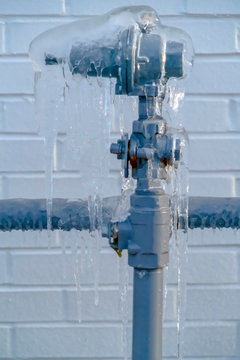Are you in search of tips involving Prevent Frozen Pipes ?

Cold weather can ruin your plumbing, specifically by freezing pipes. Right here's exactly how to stop it from taking place and what to do if it does.
Introduction
As temperature levels decline, the danger of icy pipes rises, potentially resulting in costly fixings and water damage. Recognizing exactly how to prevent frozen pipelines is important for property owners in chilly climates.
Prevention Tips
Shielding at risk pipelines
Cover pipes in insulation sleeves or use warmth tape to shield them from freezing temperature levels. Concentrate on pipes in unheated or external locations of the home.
Heating techniques
Maintain interior rooms adequately heated up, especially locations with plumbing. Open up cabinet doors to permit warm air to flow around pipes under sinks.
Just how to identify icy pipelines
Search for lowered water flow from faucets, uncommon smells or sounds from pipelines, and visible frost on subjected pipes.
Long-Term Solutions
Architectural changes
Take into consideration rerouting pipes away from exterior walls or unheated locations. Include extra insulation to attics, basements, and crawl spaces.
Upgrading insulation
Buy high-grade insulation for pipes, attics, and wall surfaces. Appropriate insulation assists preserve constant temperature levels and decreases the threat of frozen pipelines.
Securing Exterior Pipes
Yard tubes and outdoor faucets
Detach and drain pipes yard tubes before wintertime. Set up frost-proof spigots or cover outdoor faucets with insulated caps.
Understanding Icy Pipes
What causes pipelines to freeze?
Pipelines freeze when subjected to temperatures listed below 32 ° F (0 ° C) for prolonged durations. As water inside the pipes freezes, it increases, taxing the pipe walls and potentially creating them to break.
Risks and damages
Icy pipes can lead to water system interruptions, home damages, and costly repair services. Burst pipes can flood homes and create substantial structural damage.
Indications of Frozen Piping
Identifying icy pipelines early can prevent them from rupturing.
What to Do If Your Pipelines Freeze
Immediate actions to take
If you believe frozen pipes, keep faucets open up to relieve pressure as the ice melts. Make use of a hairdryer or towels taken in hot water to thaw pipelines slowly.
Final thought
Protecting against icy pipes needs proactive steps and quick responses. By recognizing the causes, indications, and safety nets, property owners can secure their pipes throughout cold weather.
5 Ways to Prevent Frozen Pipes
Drain Outdoor Faucets and Disconnect Hoses
First, close the shut-off valve that controls the flow of water in the pipe to your outdoor faucet. Then, head outside to disconnect and drain your hose and open the outdoor faucet to allow the water to completely drain out of the line. Turn off the faucet when done. Finally, head back to the shut-off valve and drain the remaining water inside the pipe into a bucket or container. Additionally, if you have a home irrigation system, you should consider hiring an expert to clear the system of water each year.
Insulate Pipes
One of the best and most cost-effective methods for preventing frozen water pipes is to wrap your pipes with insulation. This is especially important for areas in your home that aren’t exposed to heat, such as an attic. We suggest using foam sleeves, which can typically be found at your local hardware store.
Keep Heat Running at 65
Your pipes are located inside your walls, and the temperature there is much colder than the rest of the house. To prevent your pipes from freezing, The Insurance Information Institute suggests that you keep your home heated to at least 65 degrees, even when traveling. You may want to invest in smart devices that can keep an eye on the temperature in your home while you’re away.
Leave Water Dripping
Moving water — even a small trickle — can prevent ice from forming inside your pipes. When freezing temps are imminent, start a drip of water from all faucets that serve exposed pipes. Leaving a few faucets running will also help relieve pressure inside the pipes and help prevent a rupture if the water inside freezes.
Open Cupboard Doors
Warm your kitchen and bathroom pipes by opening cupboards and vanities. You should also leave your interior doors ajar to help warm air circulate evenly throughout your home.

We were made aware of that article about Prevent Frozen Pipes through an acquaintance on another domain. For those who appreciated our page if you please remember to pass it around. Thank you so much for going through it.
Book Your Appointment
Comments on “Avoiding Frozen Pipes: Top Methods for Winter”